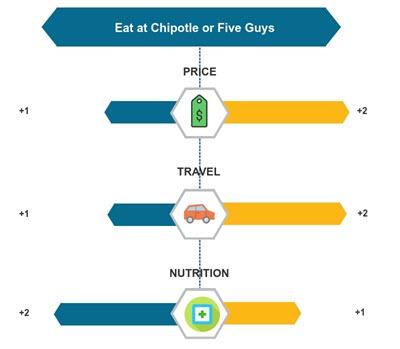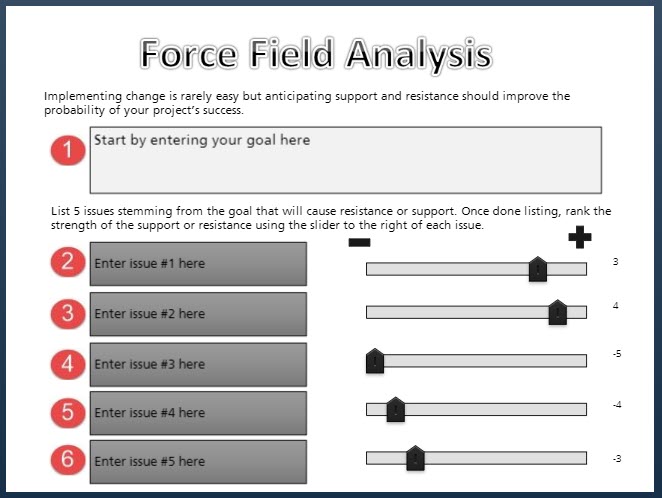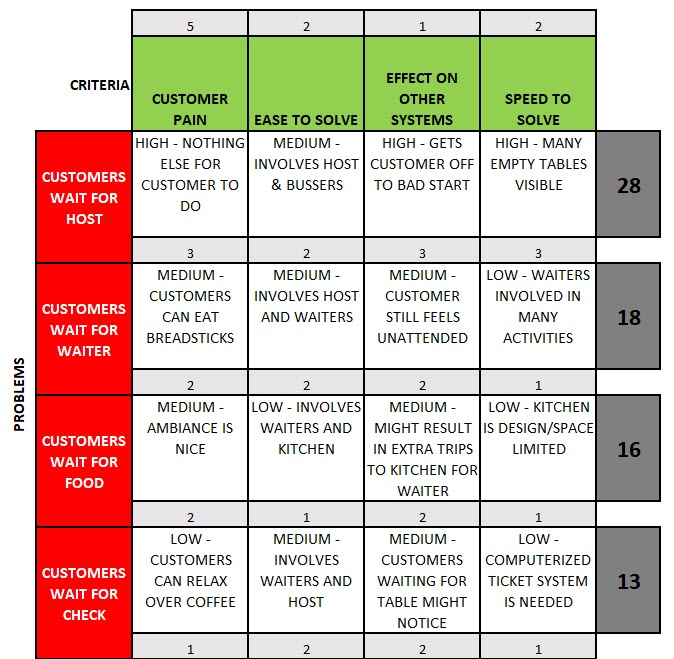FLIP SESSION RESOURCE PAGE
Session T15: Decision Analysis to Improve, Make, or Break Decisions3. The Matrix
One quick way to add structure to DA is through the introduction of a matrix. Perhaps the most basic is the so-called "T" matrix. The idea is to list the factors in favor of an idea on one side and the opposing ideas on the other. Here is one possible example:

There are no "hard and fast" rules for creating the "T" matrix. In the example offered, a visual indicator, i.e. a bar, and a metric have been assigned.
If you have ever completed a Force Field Analysis (FAA), you may have used a "T" matrix and not known it! The FFA allows the quality pratictioner to weigh forces for and against a project early within the life cycle:

The Decision Matrix
But the majority of our issues are for more complex than can be adequately treated in two columns. Enter the matrix! According to the ASQ Quality Resources page on decision matrices, a decision matrix should be used when:
- a list of options must be narrowed to one choice.
- the decision must be made on the basis of several criteria.
- a list of options has been reduced to a manageable number by list reduction.
Procedure:
- Discuss and refine the list of criteria. Identify any criteria that must be included and any that must not be included.
- Reduce the list of criteria to those that the team believes are most important.
- Assign a relative weight to each criterion, based on how important that criterion is to the situation.
- Draw an L-shaped matrix. Write the criteria and their weights as labels along one edge and the list of options along the other edge. Typically, the group with fewer items occupies the vertical edge.
- Evaluate each choice against the criteria.
- Multiply each option’s rating by the weight.

.jpg)




